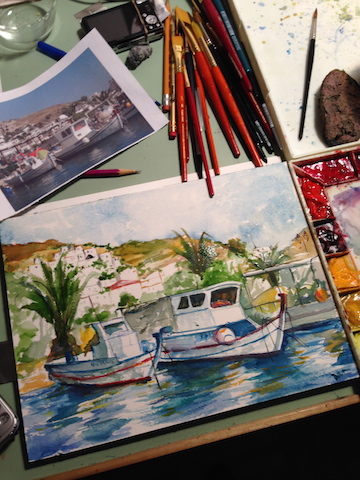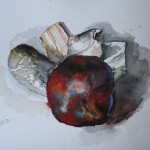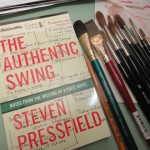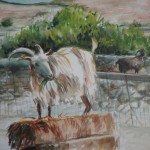Resistance and Rationalization
Resistance is fear. But Resistance is too cunning to show itself naked in this form. Why? Because if Resistance lets us see clearly that our own fear is preventing us from doing our work, we may feel shame at this. And shame may drive us to act in the face of fear.
Resistance doesn’t want us to do this. So it brings in Rationalization…The spin doctor.
~The War of Art, Steven Pressfield

How does author Steven Pressfield know what is going on in my own head? It’s so easy to just let other things going on in life walk right in and take over my precious time at the easel. Pressfield has such way of explaining Resistance that makes sense to me. I can hear my own New York accent in my head, laying it all out and making it plain as day.
It’s Resistance’s way of hiding the Big Stick behind its back. Instead of showing us our fear (which might shame us and impel us to do our work), Resistance presents us with a series of plausible, rational justifications for why we should’t do our work.
The big take-away is that reading The War of Art, and talking about it with you, really helps me stop letting life stuff distract me.
What Resistance leaves out, of course, is that all this means diddly. Tolstoy has thirteen kids and wrote War and Peace. Lance Armstrong had cancer and won the Tour de France three years and counting.
Reading these words sets me on my path, reminds me what I’m supposed to be doing for the day, and pretty much kicks me in the butt. Well worth the effort.
Just like everyone else in the world, I am a busy person. There’s a lot going on around me, much of it has to come from me, but my real work is painting.
Now what’s the problem?






